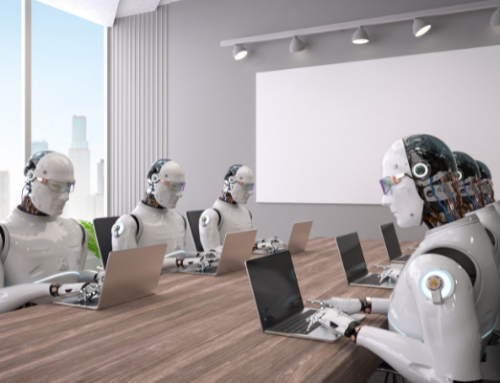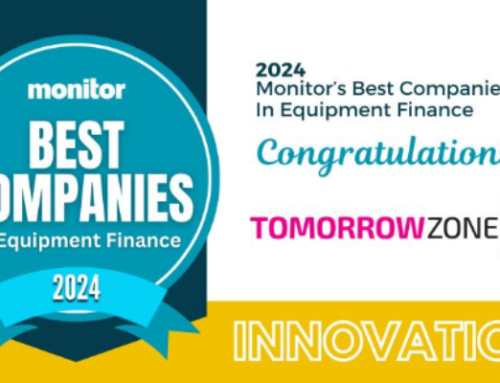
How is AI redefining work in the equipment finance industry?
In our livestream for Monitor, “Embracing AI as a Catalyst for Unlocking Your Potential,” technology and innovation experts from the equipment finance industry gathered to discuss the transformative potential of AI. Guests were Camtu Vo, Manager of Product Development for DLL and Tina Cartwright, SVP, Transformation Strategic Executive at US Bank. Deborah Reuben, CEO, and Founder of TomorrowZone®, moderated the discussion, highlighting the importance of viewing AI as a collaborator rather than a replacement for human capability. Here are some key takeaways from the conversation that can help business and technology leaders drive AI adoption in their organizations.
1. Collaboration Between Humans and AI is Key
AI is not about humans versus AI but harnessing the power of collaboration between the two. Reuben emphasized that AI should be seen as a tool that augments human capabilities rather than replacing them. The partnership of AI-powered tools augmenting human capability is the future of digital collaboration; where the real magic happens.
2. Embrace Creativity and Curiosity
Tina highlighted the importance of fostering creativity and curiosity within organizations. In highly regulated industries like equipment finance, it’s easy to feel constrained by guardrails. She stressed the need to think outside the box. In her organization, they encourage “brainstorming without boundaries.” By inviting open discussions and ideation sessions, they explore innovative ways to leverage AI, even in traditionally constrained environments.
3. Shift from Providing Information to Interaction
Historically, AI has been used to provide information to humans, who then take action. Tina shared a new mental model. Instead of just leveraging intelligent automation to provide information, her organization is now exploring ways to enable more direct interaction between humans and AI. This involves using AI to provide recommendations and support decision-making, allowing humans to focus on higher-value tasks and enhancing efficiency.
4. Identify Routine Activities for Automation
Panelists discussed the potential for automating routine activities using AI. Identifying these routine tasks and automating them can free up human resources to concentrate on more valuable work. This shift can significantly enhance efficiency and productivity. Tina shared an example from her organization where they use AI to identify underutilized product opportunities for their sales team. This automation allows sales professionals to concentrate on more strategic aspects of their work, resulting in improved sales outcomes.
5. Establish Dedicated AI Labs
Camtu introduced the concept of an AI lab within organizations. Such labs serve as dedicated resources for AI experimentation and implementation. They provide a structured framework for testing AI applications and turning innovative ideas into actionable projects. One notable project emerged from this lab, where they harnessed AI to analyze data and present insights to the executive board, creating actionable intelligence from raw information.
6. Continuous Improvement
Both Tina and Camtu emphasized the value of continuous improvement in AI initiatives. It’s not just about implementing AI solutions and leaving them as is; it’s about analyzing their performance, reevaluating, and refining them to maximize their benefits.
7. Look Beyond Your Industry
Camtu highlighted the importance of looking beyond your industry for inspiration and collaboration. Exploring what other industries are doing with AI can bring fresh ideas and opportunities for growth. For instance, her organization has been exploring AI applications used in different contexts and considering how these concepts might be adapted to their specific industry needs. This should be done with a keen awareness of data privacy concerns.
In conclusion, these industry leader insights affirm that AI is more than a buzzword; it’s a practical tool reshaping the equipment finance industry. Embracing collaboration between humans and AI, fostering creativity, and refining initiatives enables organizations to navigate the AI landscape successfully.
The real-life examples that were shared in this session, underscore AI’s transformative power, echoing Deborah’s insight that AI’s true potential lies in collaboration with humans, fundamentally reshaping the industry, enhancing efficiency, and fostering unprecedented innovation.
If you missed the original live stream, you can take in the replay of the full session here.





